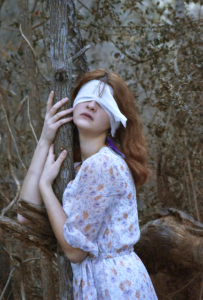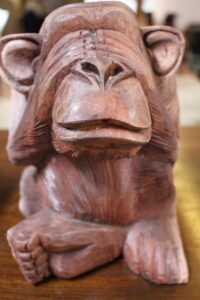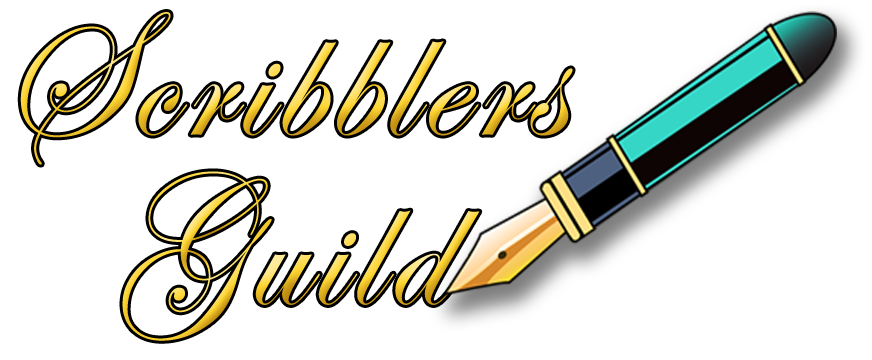How Not To Be A Wimp
Using Blind Spots and Limiting Beliefs to Power Your Memoir

In my memoir classes, one of my favourite things to do is ask questions of my students to get them thinking more deeply about their stories, their characters and ultimately themselves.
One of my students brought up the topic of fear of success the other day. She mentioned that she had a crippling fear of being successful, ie. “a public figure”.
When I asked her what she thought was scary about that, she couldn’t tell me exactly, although, for her, it was tied up with public appearances, maybe interviews or readings of her work. They terrified her. It came down to stage fright and a massive fear of looking foolish.
As we dug a little deeper, she realized her fear wasn’t based on her ability or lack thereof. She’s a good writer and confident in her ability as a wordsmith. Her fear was based on her unacknowledged need for approval and fear of judgement. She was so afraid that she would make stupid gaffes that she wouldn’t allow herself to take advantage of any promotional opportunity where she might suffer embarrassment.
She had run headlong into one of her own limiting beliefs.
So, what exactly are limiting beliefs? What are blind spots?

Limiting beliefs and blind spots are certain characteristics about ourselves that we simply can’t see. They’re a type of self-identity that helps us cope by sweeping under the rug certain aspects of our personality that we don’t want to acknowledge.
They arise out of our life’s experiences and choices, and have become carved in stone as “rules to live by”. These are all the judgements we’ve made and the things we believe about ourselves. They’re our psychological “Polestar” by which we guide our life’s choices and decisions.
For example:
I can’t: I can’t paint portraits, sing opera, climb mountains, cook a turkey. These statements keep us safe from failure by not even attempting certain tasks. Often the one thing our “I can’t” statements require is additional knowledge or the acquisition of a new skill for us to change.
I do, or I don’t: I don’t eat meat, I don’t smoke, I don’t like zucchini or politics. I do write, I do take care of my family, and so on. These iron-clad self-definitions give us a sense of security in the face of too many choices. These habits can be changed, but it requires conscious effort.
I am or I’m not: I’m kind, I’m creative, I’m attractive, I’m a writer/artist/workaholic. I’m not a bad person. I’m old, I’m fat, I’m ugly, I’m poor or stupid or not good enough. These “I am” statements are at the heart of our self-identity and are often the hardest ones to change because if we do, we won’t be who we think we are. These deep-seated self-identifiers are the stuff of great memoirs because they are the elements that must be transformed in our characters.
I must or must not: I must not fart in public, I must be a good girl, I must moderate my language in church, I must get good grades, keep a clean house, get a good job. These “must” statements are often mandated by outside influences despite our own deeper inclinations and may be altered when they no longer suit who we’ve become, or would like to become. Often, they arise from very early conditioning and take a great deal of effort just to recognize them as beliefs, not natural laws.
Other people: Will take advantage of me, are out to get me, are basically good, will judge me, won’t like me, won’t accept me, will blame me, and so on… What we believe about other people colours how we behave with them and can result in a self-fulfilling prophecy. But other people are more concerned with their own lives and beliefs. By suspending our own judgement about them we can change our behaviours towards them and therefore, their perception of us. If we don’t expect to be seen as lower status, a victim, a loser, our body language changes, our topics of conversation and dialogue change, our whole way of being changes, so we’re seen differently, more powerful and confident by other people.
The world around us: We also have all sorts of mistaken beliefs and blind spots about the way the world works. “Flat Earth” beliefs, pit bulls are dangerous/not dangerous, black/white/red/yellow people are inherently evil or “our kind”. There’s no such thing as climate change or climate change is going to wipe out all life on earth. The only way to counter these beliefs is through research with an open mind to the best of our ability, so we can determine our own conclusions based on truth and facts.
Using Your Blind Spots in Memoir

A memoir more often than not is a story about internal transformation, so when we’re writing stories based on our personal history, we need to understand ourselves as well as, or better than any fictional character we may create. We must ask the penetrating questions that may uncover things about ourselves that we’d really rather not know.
Step One: Recognition
First, we need to recognize when we’re operating from the position of a limiting belief. Because it’s a blind spot, we’re psychologically incapable of seeing it. Often it takes intense introspection, therapy, journaling, or the caring words of a good friend or counsellor to wake us up to our limited thinking. A good friend will tell us things about ourselves to which we’ve been oblivious, but that they see clearly, and when this happens, we’ll find ourselves annoyed or resentful…”How can you even say that about me? I thought we were friends!” A good friend cares for us, warts and all, and often they see our warts much more clearly than we do ourselves.
Step Two: Acknowledgement and Acceptance
But when a blind spot is pointed out to us, our automatic reaction is almost always “That’s simply not true!” We get angry in the defence of our cherished beliefs, especially if, deep down, we may have a niggling suspicion that they’re not the iron-clad laws of reality we want them to be. On some level, we may know that there’s something wrong, as evidenced by repetitive thoughts like the ones in the list above, but unless we look for the Why, we can’t overcome the cause of the belief and change it.
The reason for our over-reaction is that we would have to admit that we’ve made a mistake, and mistakes are dangerous. Mistakes can lead to our becoming lunch for the local sabre-tooth tiger. Mistake avoidance is a biological imperative, and very hard to overcome.
If we’re completely honest, we’ll come to realize that there just might be something to their assessment, and that’s the turning point. Once we accept that there might be some truth to their viewpoint, we can begin to look for particular instances where we’ve been acting out of fear or avoiding a specific type of situation, and permit ourselves to try a different behaviour. It’s the basis of changing habits, and can, over time, be life-altering.
Step Three: Take Action

Just knowing that our blind spot exists isn’t enough. Once we have the key, we need to act on it. There is a way to do this, but it isn’t easy. Here’s the process:
- Monitor your thoughts.
- It helps if you can pinpoint the source of your limiting belief, an original trauma or pain point, but knowing the source isn’t essential. Your goal is to overcome it. However, you do have to accept that maybe, just maybe, there’s some truth to an opinion so different from your own. Only then can you make progress towards a new insight.
- When you have one of these insights about your own mental blocks or limiting beliefs, begin to build a habit of noting how often you have the limiting thought. This will take some practice. You will start to recognize thought patterns and behaviour patterns.
- It’s been said that success lies just outside your comfort zone, so when you understand that you’ve created a fear-based pattern of avoidance, procrastination, “busy-ness” with other tasks, not trying things that interest you, you can begin to work on pushing past the fear and getting outside your comfort zone. You can begin to feel comfortable with uncertainty.
- Over time, repeated push-back against your fears will desensitize them, and you’ll start to take on more and bigger challenges.
- Eventually, you’ll start to look forward to the times when you hesitate or feel uncomfortable because they will be clues that you’re holding yourself back from opportunities for growth and preventing yourself from being the best you that you can be. Say “Yes!” to possibility.
When you learn to recognize these turning points in your life, you can incorporate them as plot points in your memoirs. They become the basis of the themes around which you build your stories, giving them more power and resonance with your audience. Readers experience the “shock of recognition” when you can connect with them on such a deep emotional level, and your memoirs will become much more than a story of what happened. They will become a record of the person you’ve become and the reasons why you are who you are. They can be a guiding light for other people struggling with the challenges you’ve learned to overcome.
And isn’t that a legacy worth leaving?
Exercises:
- Keep a notebook and jot down every time you get stuck, every time you notice yourself avoiding a topic, a situation, a certain type of person, anything that prevents you from moving ahead on a project.
- For a quick fix, a “fake it ’til you make it”, try using power poses to increase your confidence, especially before tackling something scary or something you’ve been avoiding through fear of overwhelm, fear of failure, fear of judgement, fear of ridicule, fear of not being good enough, or any of the other fears which tend to cripple your confidence and development. HERE is a Ted Talk by Amy Cuddy that shows you how.
Some other ways to dig deep to try to adjust your own limiting beliefs:
- Meditation
- Therapy
- Journalling
- Morning Pages (Julia Cameron’s method of teasing out hidden thoughts and insights so you can take a close look at them, documented in her book, “The Artist’s Way“)
Beverley Hanna
Trained as an artist in the late 1960’s and early 1970’s, I was one of the first creatives to be employed in the computer graphics industry in Toronto during the early 1980’s. For several years, I exhibited my animal portraiture in Canada and the U.S. but when my parents needed care, I began writing as a way to stay close to them. I’ve been writing ever since. I run a highly successful local writer’s circle, teaching the craft and techniques of good writing. Many of my students have gone on to publish works of their own. I create courses aimed at seniors who wish to write memoirs, with a focus on the psychology of creatives and the alleviation of procrastination and writer's block.
